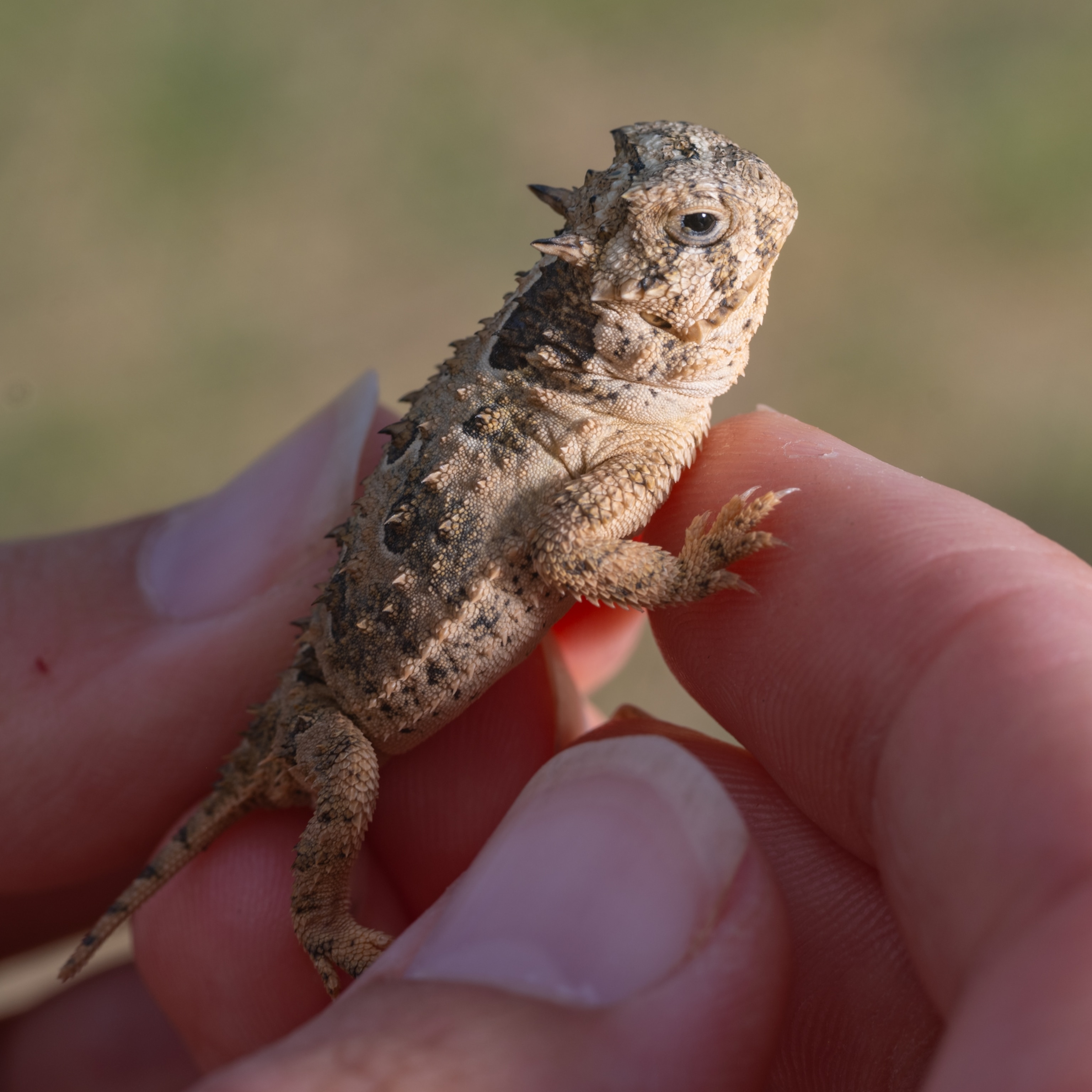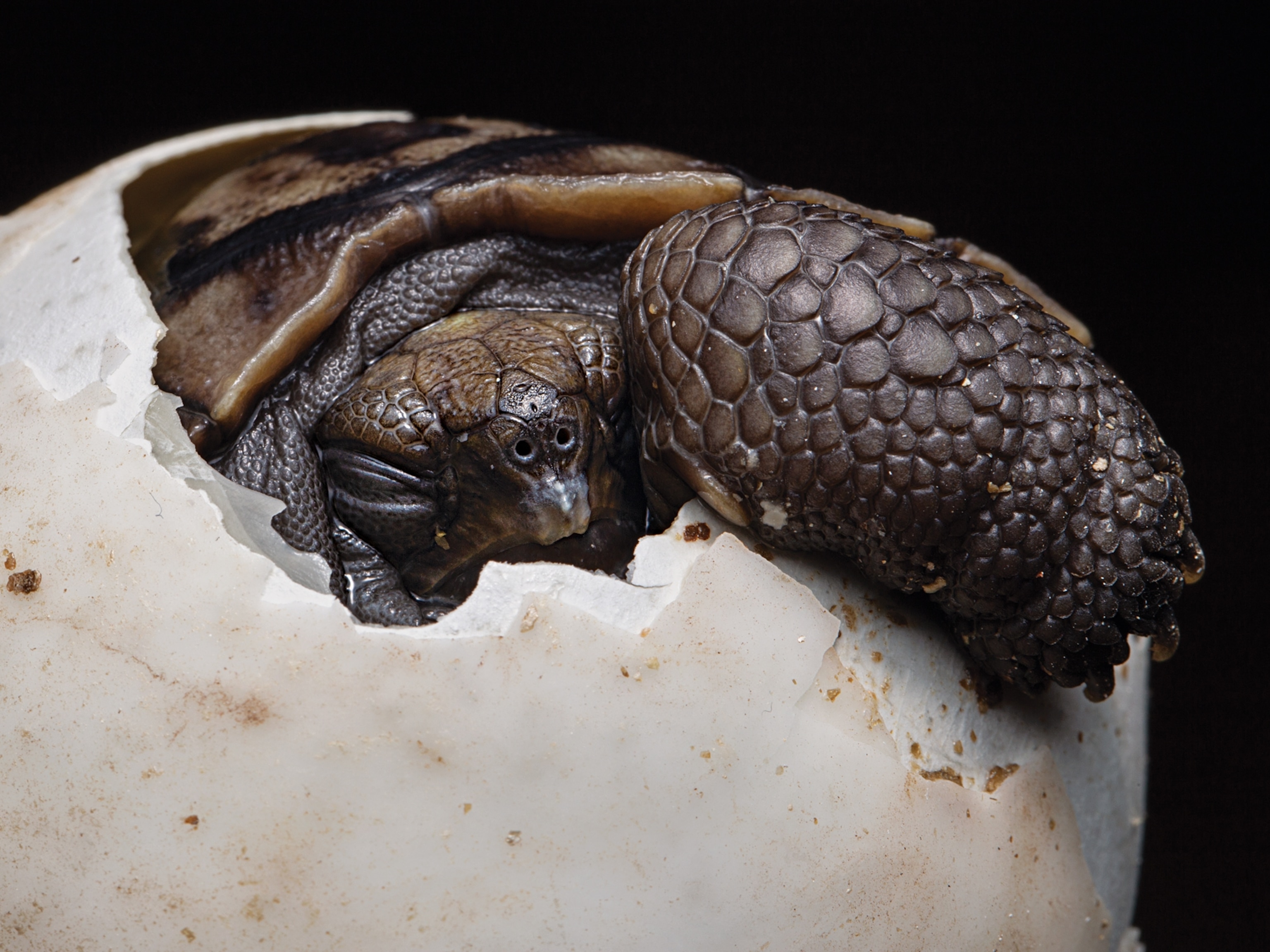In 2008, scientists found three eastern massasauga rattlesnakes dead, their faces swollen and disfigured, in a forest near Carlyle, Illinois. It was the ninth year of a long-term monitoring program of the threatened species, and no one had ever seen anything like it before.
The faces of the reptiles were so messed up, Matthew Allender says, experts first thought they’d been run over by cars.
“So we took samples, we ran a lot of tests, and lo and behold, these were the first reported cases of Ophidiomyces ophiodiicola in free-ranging snakes,” says Allender, a veterinarian and wildlife epidemiologist at the University of Illinois and Chicago Zoological Society, who published his results in 2011.
A close relative of the fungus O. ophiodiicola, which likely kills by overwhelming the snake’s immune system, had been found once before in a captive snake, but never in the wild. In the decade since the findings in Illinois, Allender and his colleagues have identified O. ophiodiicola in 25 snake species across 19 U.S. states and Canadian territories. The sometimes fatal affliction now has a common name: snake fungal disease. (Fortunately, the fungus appears to pose no threat to humans.)
“I think it’s everywhere,” says Allender, who has detected the snake fungus in as far-ranging locales as the western U.S. and Puerto Rico. Though the fungus may not infect every snake species, “we’re finding it in remote places.” (Read more about the mysterious disease.)
Now, a study published in July in Emerging Infectious Diseases shows that the fungus is present in some museum snake specimens dating back as early as 1945 and collected from locations around the U.S.
Tracing the history of the disease may be critical in determining what, if anything, scientists can do to combat the latest emerging wildlife disease, says study leader Jeffrey Lorch, a microbiologist with the U.S. Geological Survey.
If it’s something people brought to North America, “we might need to focus on trying to prevent the spread,” he says. “Whereas if it's something that's been here for longer, we might be looking more at how to help snakes cope with the pathogen itself.”
That’s why he and his colleagues are now running genetic analyses of the pathogen to find out if it was inadvertently introduced to the continent, as was the case with Pseudogymnoascus destructans, the likely European fungus that causes the devastating white-nose syndrome in bats. (Read how some bat species are starting to develop immunity against the disease.)
And it can’t come too soon. Of the 11,000 known reptiles, nearly one in five is threatened by extinction due to human-caused perils, such as habitat destruction and climate change. Add in a fungal disease, and many species simply may not be able to weather another hazard, Lorch says.
A discovery in New Hampshire
The first major sign of the fungus’ emergence came in 2006, when experts at the New Hampshire Fish and Game Department noticed some of their endangered timber rattlesnakes had brown, crusty blisters on their necks and face.
“Initially, there didn’t seem to be a huge level of concern,” says Michael Marchand, a wildlife biologist and supervisor of the state’s Nongame and Endangered Wildlife Program.
But they soon found the body of one of their rattlers, apparently dead due to a “severe fungal infection in the mouth,” he and his co-authors wrote in a 2011 study.
The outbreak, later associated with snake fungal disease, ultimately claimed around 50 percent of the state’s timber rattlesnake population, which dropped from 40 to 19 adult snakes.
“It was significant,” he says, “and concerning.”
Fortunately, the population survived, and now numbers around 50, Marchand says. It’s unclear how they rebounded, though he says it’s possible the surviving snakes were able to pass on some level of immunity to the fungus.
Unraveling a snake disease
Whether snakes gain immunity is just one of many mysteries that Lorch and Allender have been investigating over the past decade.
For instance, the team has revealed snake fungal disease is systemic, first attacking the skin and later causing internal lesions in some cases. But it’s not the lesions that are deadly. Allender thinks the animals die from overactive immune responses.
So far, scientists have confirmed that snakes spread the disease through contact with each other. Not only does this mean that species that den or hibernate together are at risk of infection, but courtship and mating are also modes of transmission. The fungus can also be transferred from mother snakes to their offspring, says Lorch. (Related: Rattlesnake mothers and babies can turn their bodies into bowls to harvest rain.)
The fungus also seems to grow well under a wide variety of soil conditions and habitats, Allender says.
“It’s got broader and wider growth conditions than even white-nose syndrome,” says Allender. The P. destructans fungus has killed more than six million bats in North America. (Read how people are trying to save bats from white-nose syndrome.)
While Ophidiomyces has been found in dozens of different snake species, it seems to hit some harder than the rest. For instance, scientists have recorded infection rates of 80 percent in some populations of common water snakes, says Allender, though their mortality rates are relatively low. Rattlesnakes and other vipers, on the other hand, are particularly susceptible to infection and death.
At one point, Allender says, the mortality rate of infected eastern massasauga rattlesnakes—native to the Northeast and the Midwest—was more than 90 percent, he says. Though the massasauga outbreak has not drastically reduced the population, as of 2021, “it’s not in good shape,” he says.
Reason for optimism
Conservationists say the good news is that the fungus overall does not seem to be as dire to snake populations as white-nose syndrome or the chytrid fungus, Batrachochytrium dendrobatidis, which has led to 100 percent mortality in some amphibian populations, particularly in Central America. (Read how chytrid also indirectly harms tropical snakes, which prey on amphibians.)
“Things like chytrid and white-nose syndrome have come in and caused massive population declines in a very short period of time, but other diseases take their toll much more slowly,” says Lorch. Snake fungal disease, he says, “could potentially be more of a slow burn–type disease.”
In the meantime, the largest concern seems to be for rare snakes, such as the eastern indigo snake, which is endangered in Georgia and Florida due to development of its habitat. These black, iridescent snakes also rely on old burrows created by gopher tortoises, another reptile species in decline, says Houston Chandler, science director of the Georgia-based Orianne Society, which specializes in indigo snake conservation.
In other words, indigo snakes already have enough problems. But in some areas of southern Georgia, more than half of the eastern indigo snakes sampled have snake fungal disease, Chandler says. So far, the scientists have not recorded any mass mortality events in the infected snakes.
“So it’s not encouraging, but it doesn’t appear to be an immediate conservation concern, either,” Chandler says.
Finding solutions to the fungus
Curiously, some studies have shown the fungal infection changes the way snakes behave, says Steven Price, a conservation biologist at the University of Kentucky and National Geographic Explorer who studies queen snakes.
For instance, his research shows infected queen snakes in Kentucky stayed outside of their underground burrows longer than those without the disease.
While he can’t say for sure, Price suspects infected snakes are spending more time in the sun than non-infected snakes, perhaps to raise their body temperature in an attempt to fight off the fungus.
In New Hampshire, Marchand and colleagues have found timber rattlers gravitate to breaks in the forest canopy, suggesting that exposure to sunlight can keep the snakes healthy.
To this end, Marchand and his colleagues have begun experimenting with clearing patches of timber in an effort to give their serpents more basking areas. (Read about how rattlesnakes trick the human ear with their rattle.)
Likewise, Allender’s team has been testing potential anti-fungal treatments.
They’ve discovered that a popular, over-the-counter fungicide called propriconazole, commonly used on fruit trees and shrubs, has no effect on Ophidiomyces—if anything, it boosted the fungus’s growth in laboratory experiments, Allender says.
Yet another option, called terbinafine, is already used to combat nail fungus in people. In a 2017 study, Allender showed that cottonmouths placed in a nebulizer tank built up significant concentrations of the drug in their bodies. Slow-release terbinafine implants also proved effective in supplying the snakes with the medicine.
If further research shows terbinafine kills off O. ophiodiicola, both delivery methods could prove useful as non-invasive, safe ways to treat wild, venomous species that are particularly at risk of extinction.
In general, there isn’t enough funding to study reptile pathogens, adds Lorch, in part because “snakes are still a pretty maligned group of wildlife, so there isn’t a ton of public interest.”
But “we don't want to look back decades later,” he says, “and realize that we should have been investing more into studying this disease.”









